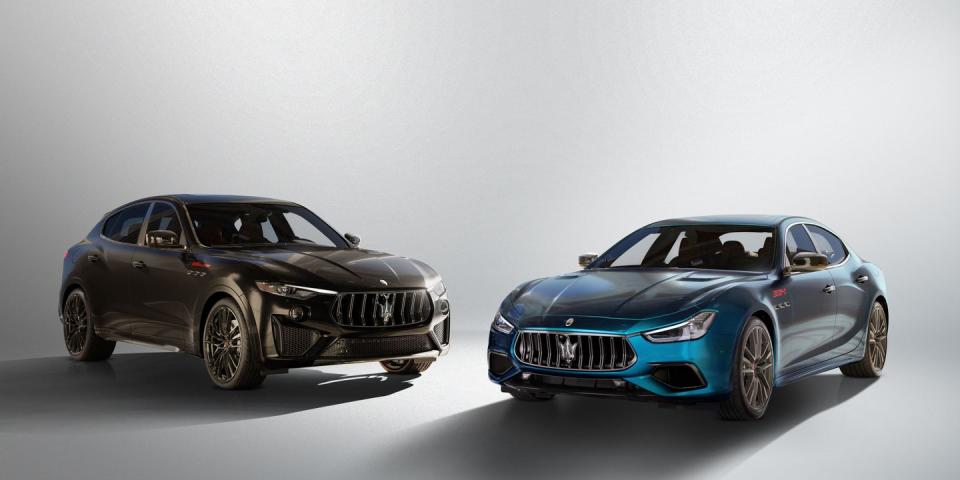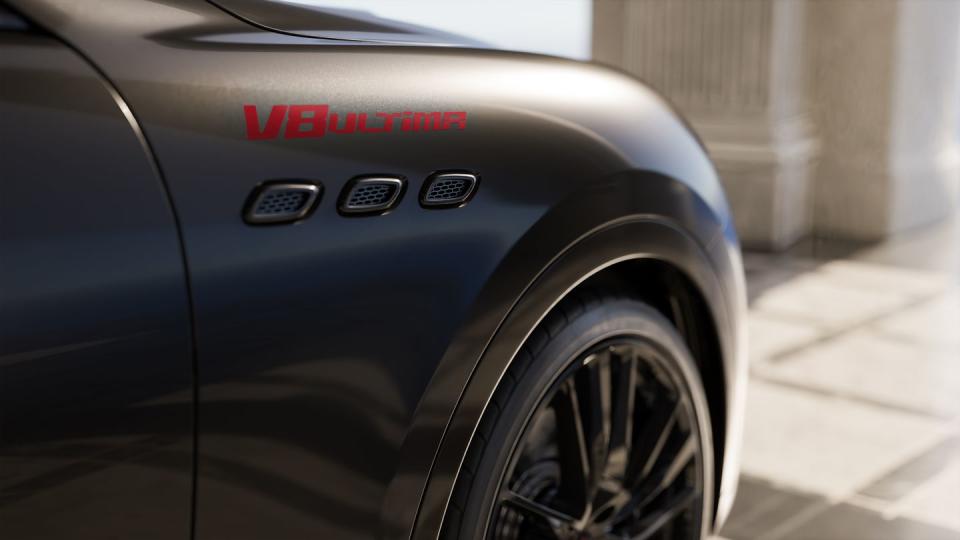Two Maserati Tribute Cars Spell the End for Gas-Powered V8

As it says caio to internal combustion, Maserati celebrates the last of its V8s with two special editions: a Ghibli 334 Ultima and Levante V8 Ultima.
Both offer more power, greater speed, and some nice trim items.
Look for them by the end of the year. No prices yet.
Maserati is unveiling two special editions at this week’s Goodwood Festival of Speed that celebrate the farewell to internal combustion V8s, as The Trident, like every other carmaker in the world, makes the inevitable switch to electric power.
The two V8 tribute cars will be the Maserati Ghibli 334 Ultima and Levante V8 Ultima. Both will salute internal combustion with production runs of 103 cars each. They’ll be available in the US in the fourth quarter of this year. No pricing has been announced.

It was quite a run for Maserati V8s. They started out in the great Maserati sports racers, of course. The first street car to be powered by a V8 was the 5000 GT Scia di Persia, or “Shah of Persia” as we might say in English today. Automotive historian, author, and Italian car expert Winston Goodfellow tells how a V8 found its way into a Maserati road car:
“The 1959 Scia di Persia, and this is straight from Giulio Alfieri’s mouth, who was the chief engineer at the time, they sent the Shah two brochures—this was like in 1958, with a Maserati 450 S (endurance racing sports car) and the 3500 GT (road car), which had just come out. And he (The Shah) came back with, ‘Do you think we could combine these two things?”
Indeed, could they?
“So Alfieri and one of the Orsis (Adolfo Orsi bought Maserati) went out and they met with him, and he said, ‘Yeah, let’s do that.’ That was the birth of the 5000 GT.”
Like every car ad ever printed has always said, improvements from race cars find their way into production cars.
“They had the 200 SI, the 300 S, and the 350 S were their race cars in the mid-‘50s,” Goodfellow said. “The 300 S was a fantastic, superbly balanced machine, won a lot of races. But they couldn’t beat Ferrari for the championship because Ferrari was faster. All those had two-liter, three-liter, or 3.5-liter inline-sixes. Then for ‘57 they made the 450 S with a 4.9-liter V8. It was 400 horsepower. It was faster than the 315 and 335 S Ferraris. The problem was, Ferrari had a separate race department—Maserati did not, so the Ferraris were much more thoroughly developed and tested. Maserati should have won that year, but the last race, they had problems, so Ferrari won on the last race. Maserati did beat them twice that year in ‘57. They basically lead almost every race but the cars broke. So if the thing held together, the 450 S was faster than anything else anybody had.”
So why not transfer that V8 from the 450 S into a street car?
“Yes, to the 5000 GT,” said Goodfellow. “Those first engines were literally race engines. Maybe slightly detuned for the street. But that was the real deal. Then the car was constantly upgraded.”

 Yahoo Autos
Yahoo Autos 